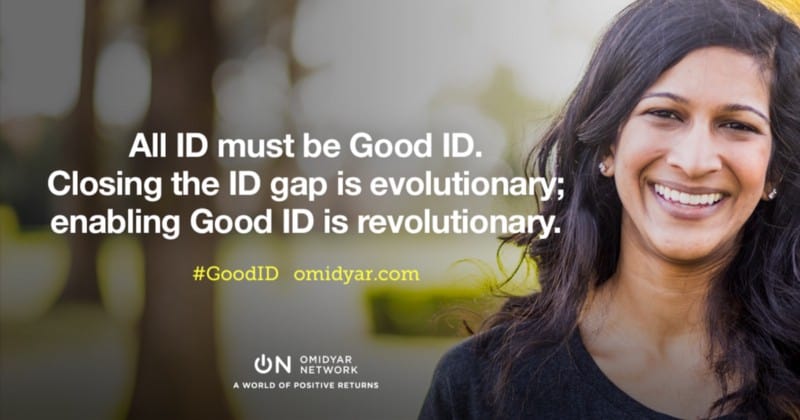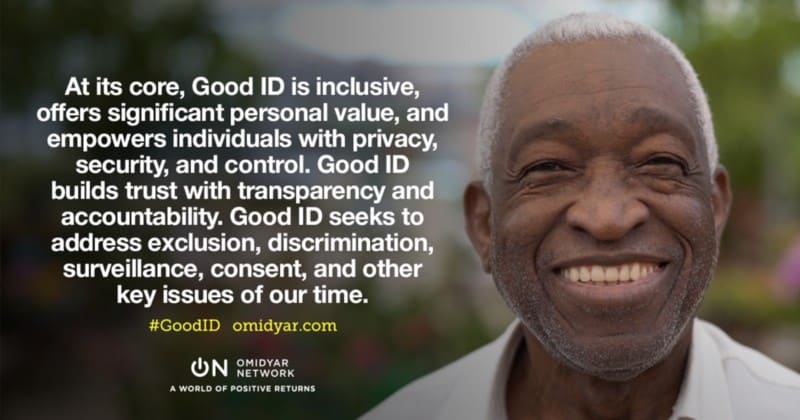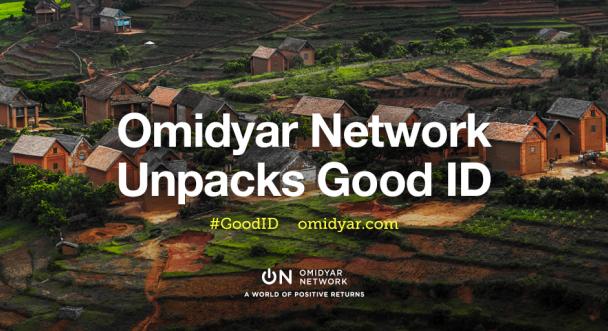For three years, Omidyar Network has used the term “Good ID” to characterize the forms of digital identity we would like to see in the world. This week, the Digital Identity team adds more definition to that vision.
For three years, Omidyar Network has used the term “Good ID” to characterize the forms of digital identity we would like to see in the world. This week, we added more definition to that vision.
Overview
Good ID is our normative framing for any digital identity system that prioritizes individual empowerment while ensuring adequate safeguards.
We envision the Good ID frame to be inclusive of digital ID (i.e., issued, defacto, and self-asserted) as well as to the entire identification ecosystem (i.e., policies, practices, and technologies).
In short, we believe all ID must be Good ID.

We have seen firsthand that the positive benefits of digital identity are not guaranteed. While obtaining a digital ID can help individuals unlock new opportunities, it can also introduce new risks and challenges. Good ID seeks to address exclusion, discrimination, surveillance, consent, and other key issues of our time.
With our updated Point of View on Good ID we share our evolving understanding about what specific behaviors and choices can lead to Good ID.
In our view, achieving Good ID is a function of both ethical practice and thoughtful technology and policy design.

Practice
Transparent, accountable, and trust-building practices lead to Good ID.
System planners, technologists, program managers, policy makers, and investors either build or erode trust with digital ID holders with every choice they make. Trust in systems and institutions influences people’s adoption and choices in digital identity programs. And in today’s trust-deficient economy, there are many good reasons why public and private digital ID issuers would want to support Good ID — if not solely for ethical reasons, at least to mitigate risk and pursue new business opportunities.
In Omidyar Network’s Point of View on Good ID, we articulate seven practical ways leaders can support Good ID. For example, we believe Good ID champions are defined by their use of:
- Ethical and legal frameworks, scenario-based tools, feedback loops, research, and future-resilient tools to make informed decisions before and after systems are built; and
- Open standards and open-source technology to facilitate future evolutions of the digital identity system, without dependency on one vendor.
Design Features
Thoughtful design features in technologies and policies also lead to Good ID.
We believe an emphasis on privacy, inclusion, user value, user control, and security create the foundation for impact and mitigate many risks of digital identity.
For each of these five design features, we list some tactical ways they can be embedded in policy and technology.
To illustrate, we believe good digital identities must offer:
- Individuals the legal right to change how their identity information is used (to support Privacy).
- Limits to the number and type of situations when any digital ID is mandatory (to support Inclusion).
- Avenues for startups to build customer-driven services on top of the identity stack and innovate to provide more value overtime (to support User Value).
- Options for individuals to deny use of their identity, update records when identity information changes, and revoke their permission even after permission has been granted (to support User Control).
- Public and private frameworks that embed an audit trail, assign responsibility, and provide for recourse in the case of a security leakage or breach (to support Security).
We are optimists and we believe in improving today’s imperfect systems. We invest in organizations that are helping businesses and governments put in place the proper design principles and safeguards as well as fix policies that may exclude individuals from public benefits and private services. We also invest in bringing new technologies and evidence to market and in creating an ecosystem where both privacy and innovation can thrive. And we support institutions that can hold issuers to account. We’ve based this point of view on our direct experience as an investor in digital identity innovations as well as on an extensive knowledge base that many organizations have contributed to.
#GoodID Movement
We also acknowledge that our normative framing will have to evolve with new thinking, new technology, new experience, and new societal expectations. To fully realize digital identity systems that maximize the benefits and minimize the harms to individuals, we know we will need more inputs from a diverse community of experts. Thank you in advance for sharing your experiences and opinions with us. We think it’s realistic to achieve Good ID — if we are collectively ambitious and work together.
Please help unlock the full potential of Good ID by sharing your learning, viewpoints, projects, events, and other resources on the Good ID online platforms — www.good-id.org and @GoodID.
And for more ideas we believe can lead to Good ID and to learn how Omidyar Network is backing Good ID, please visit our website.


